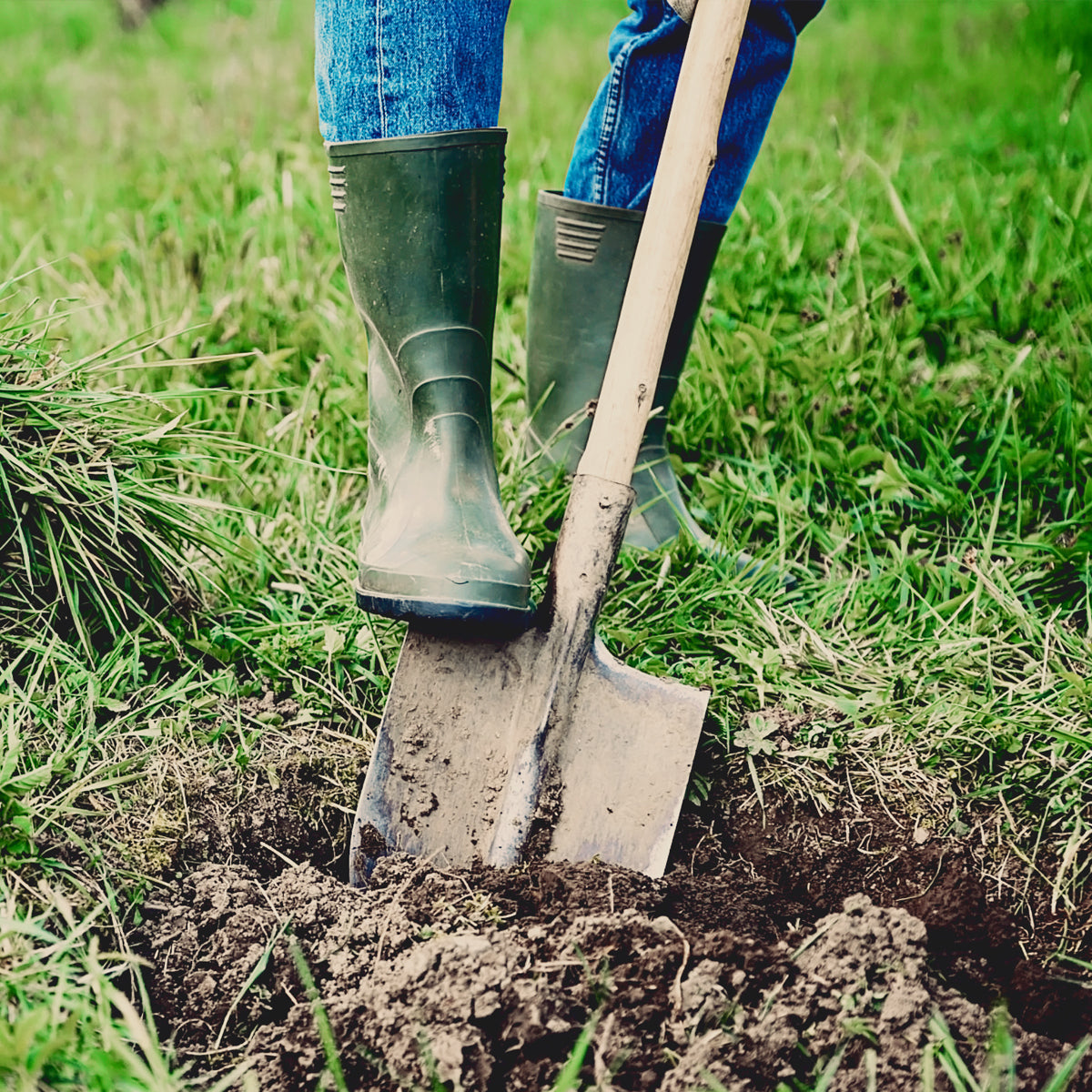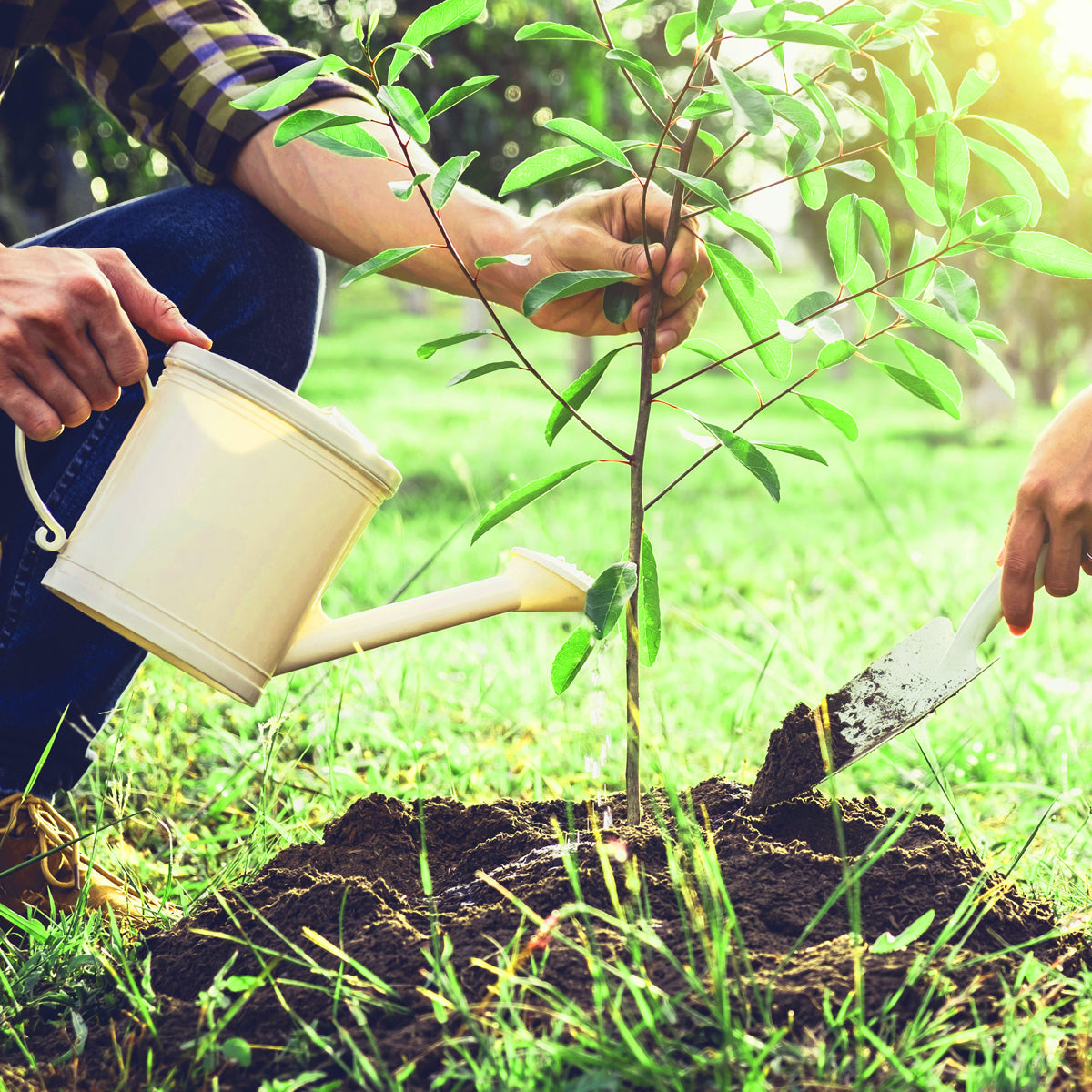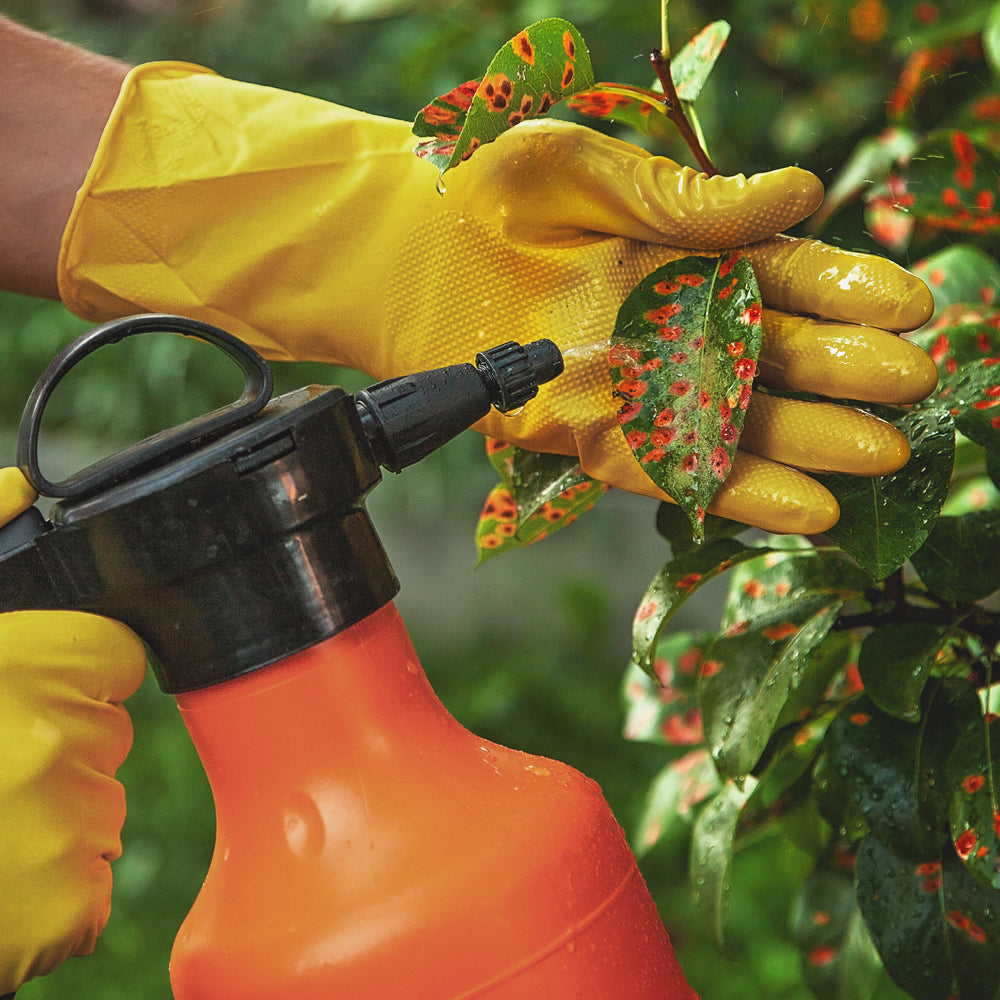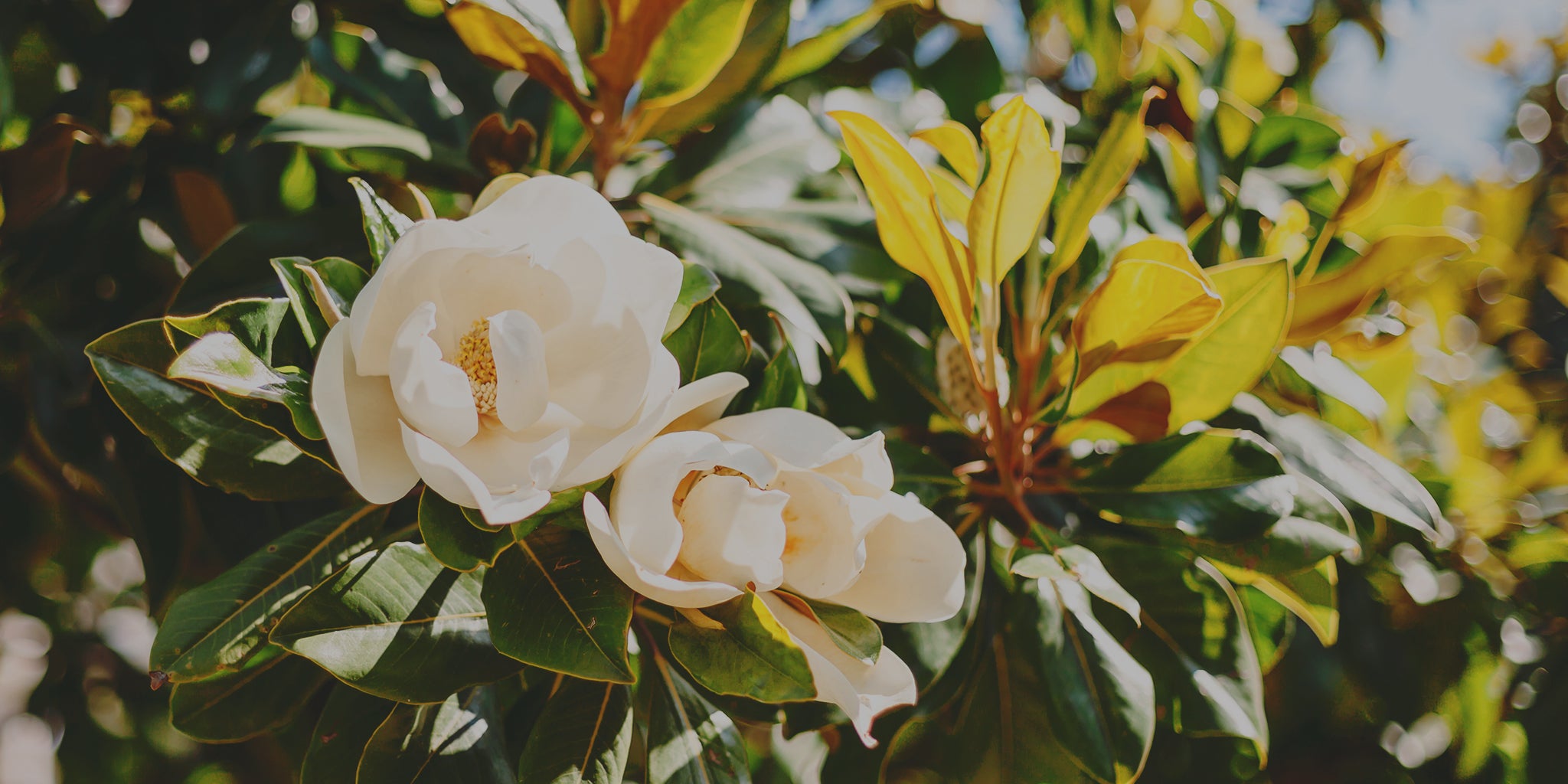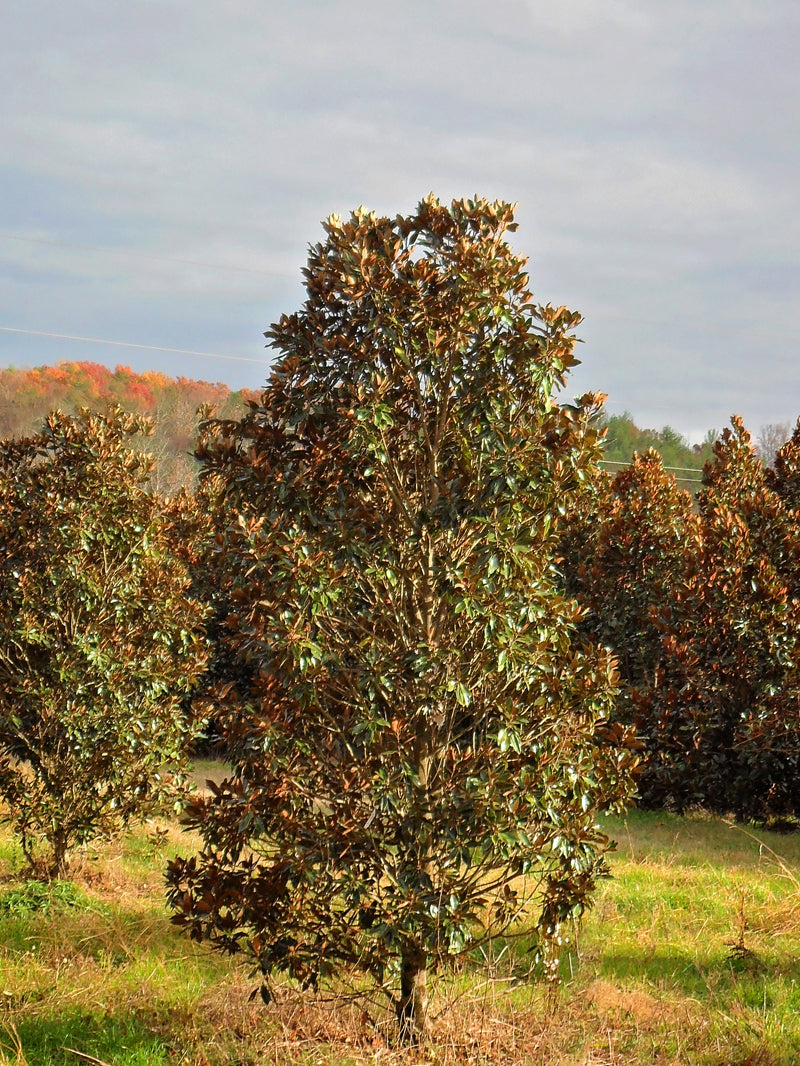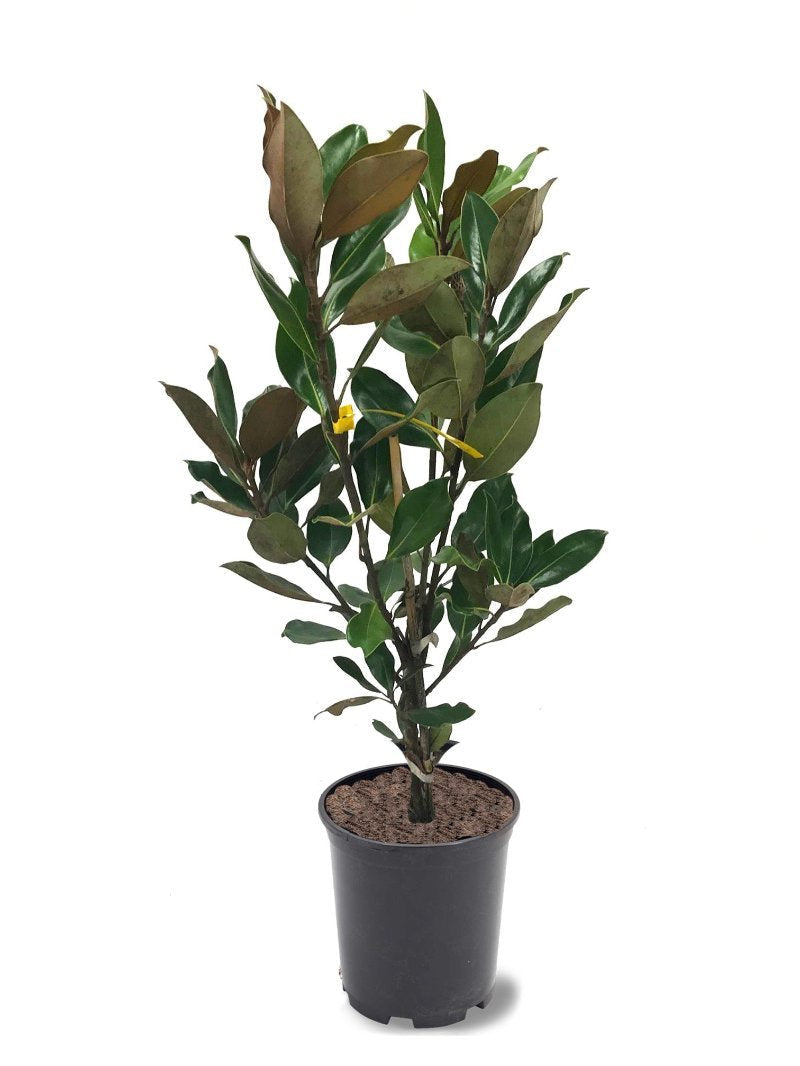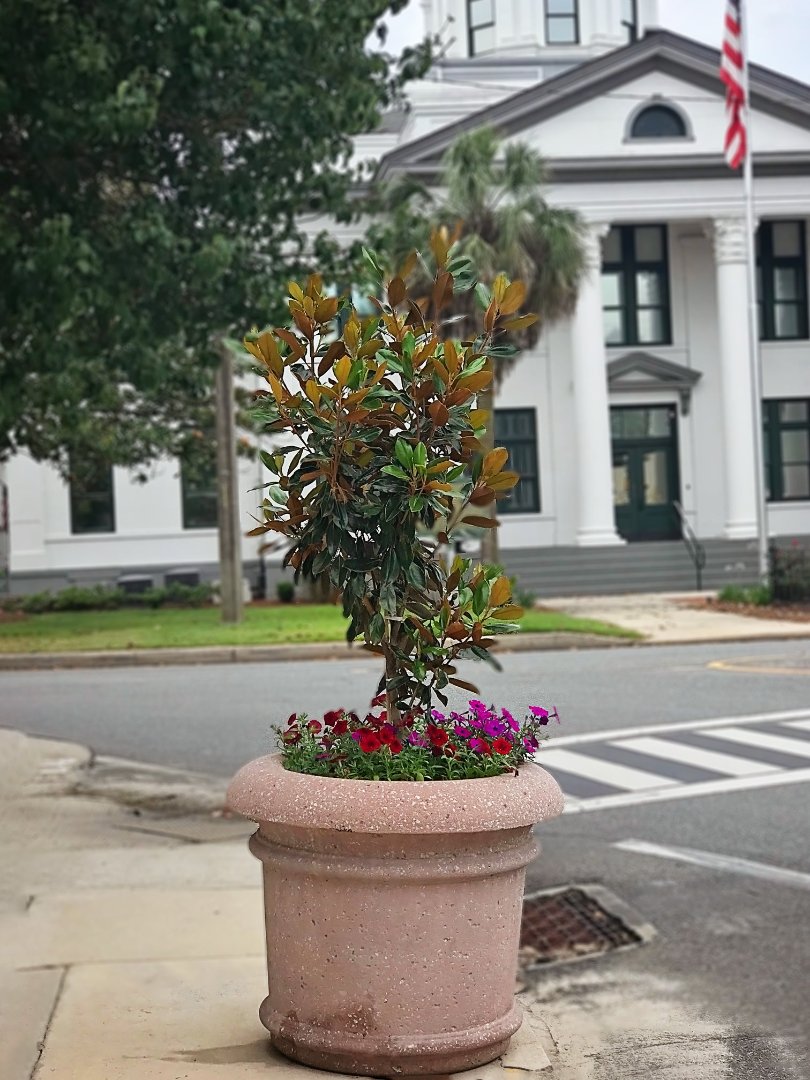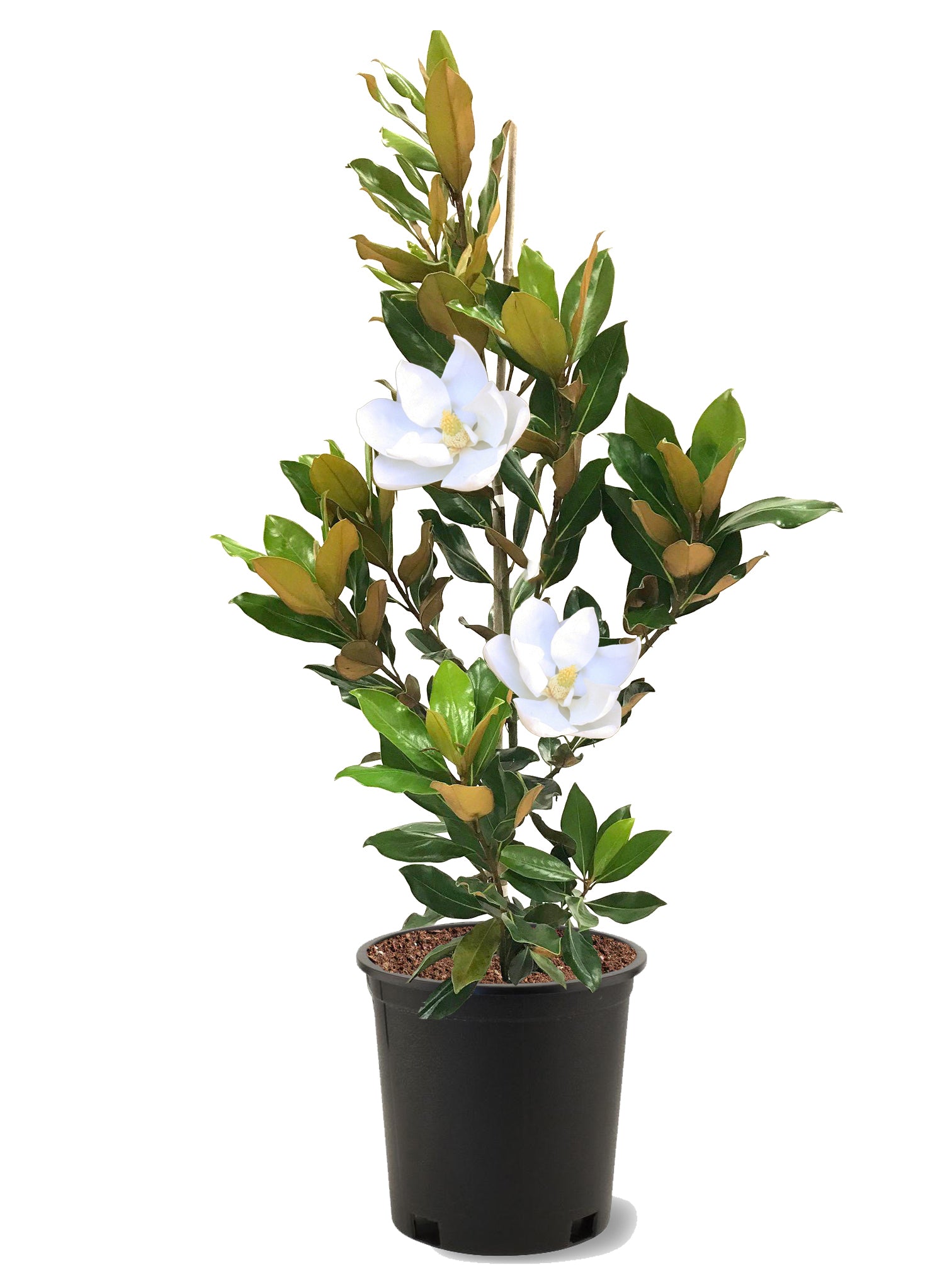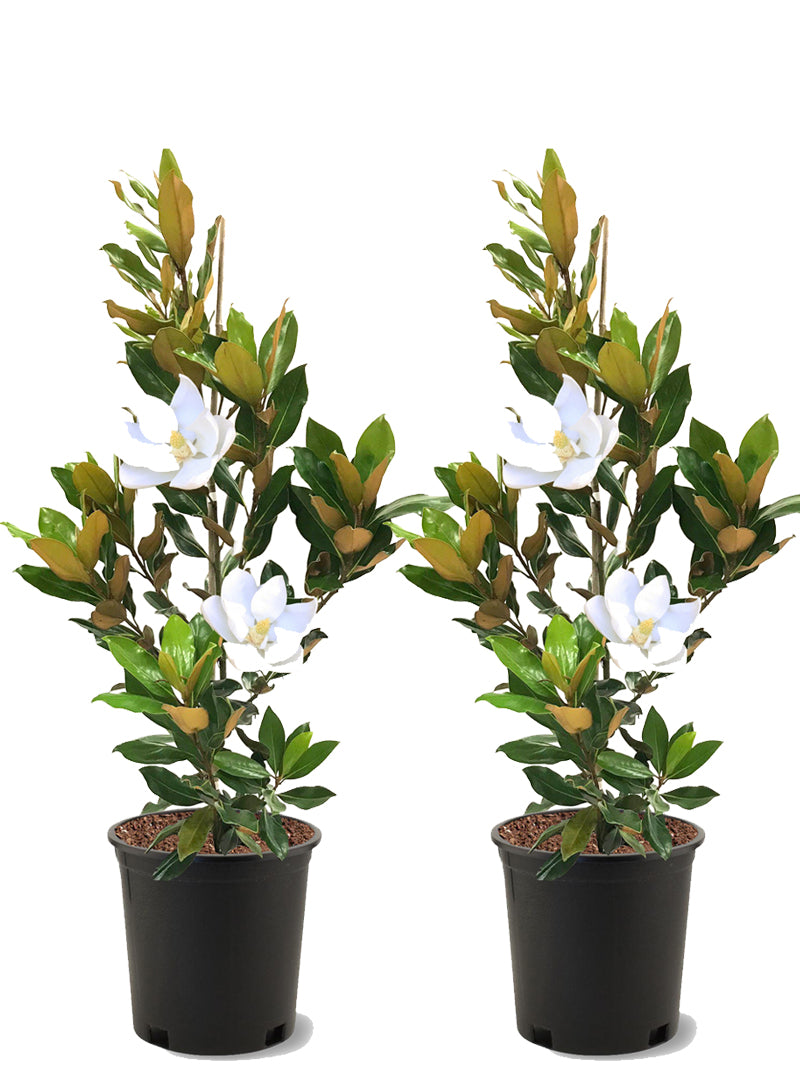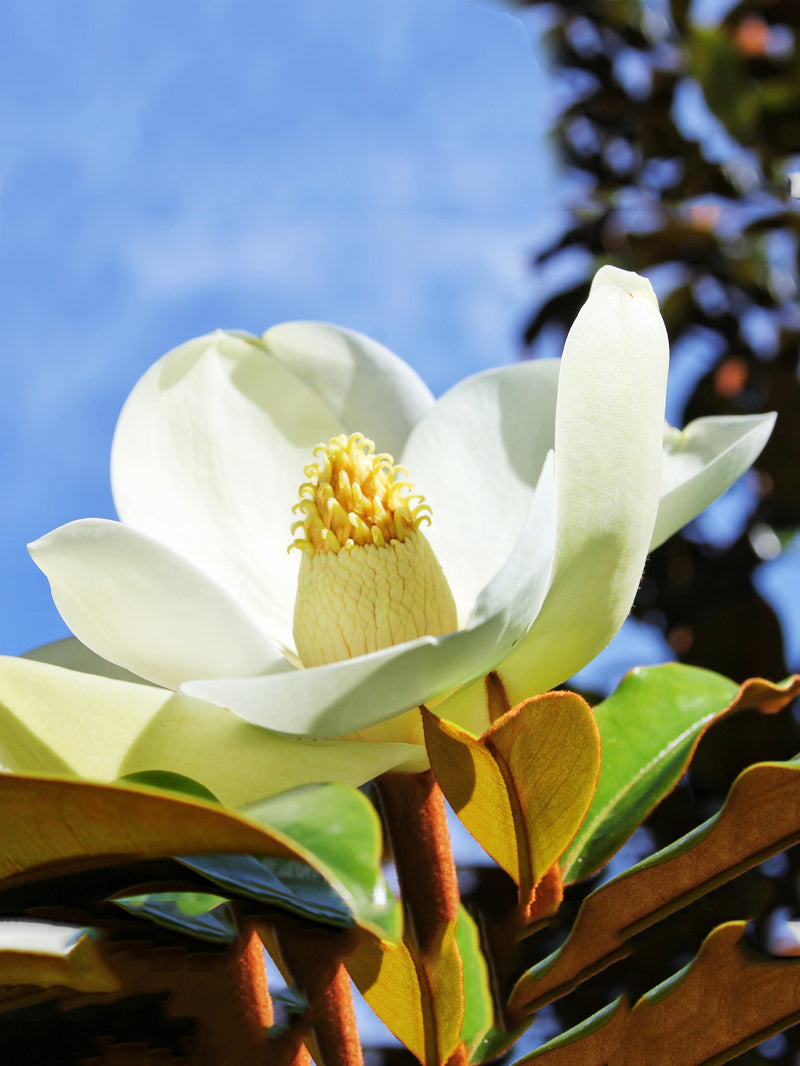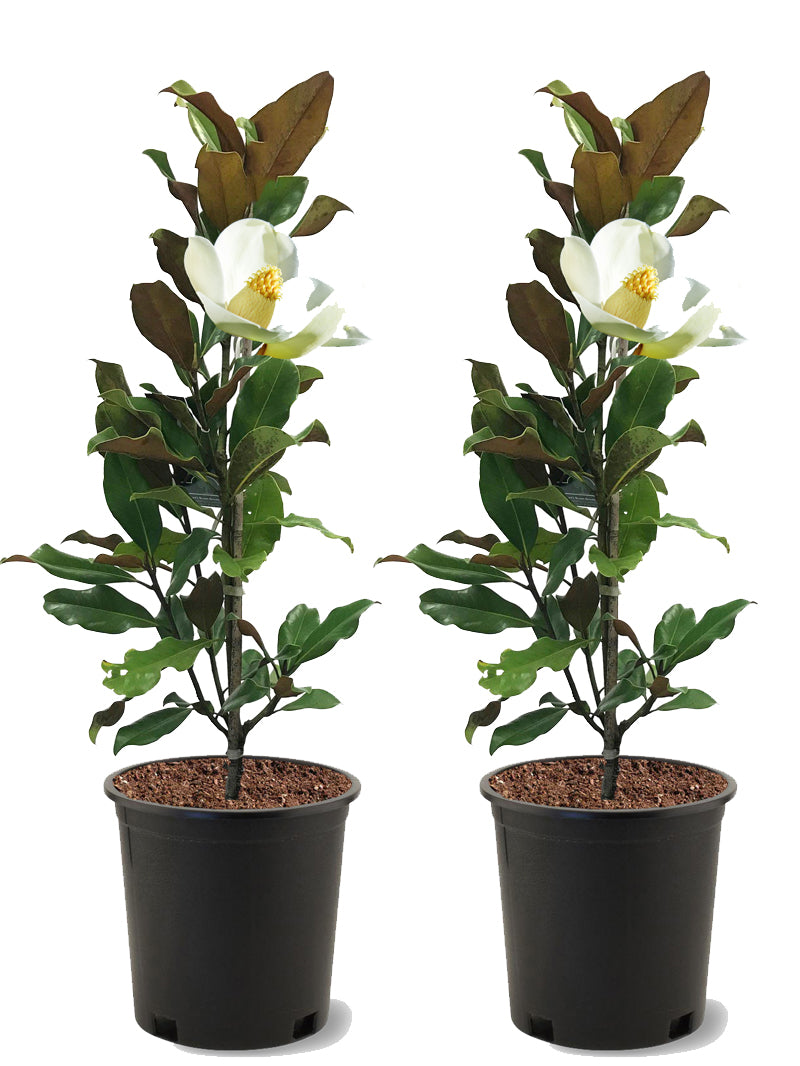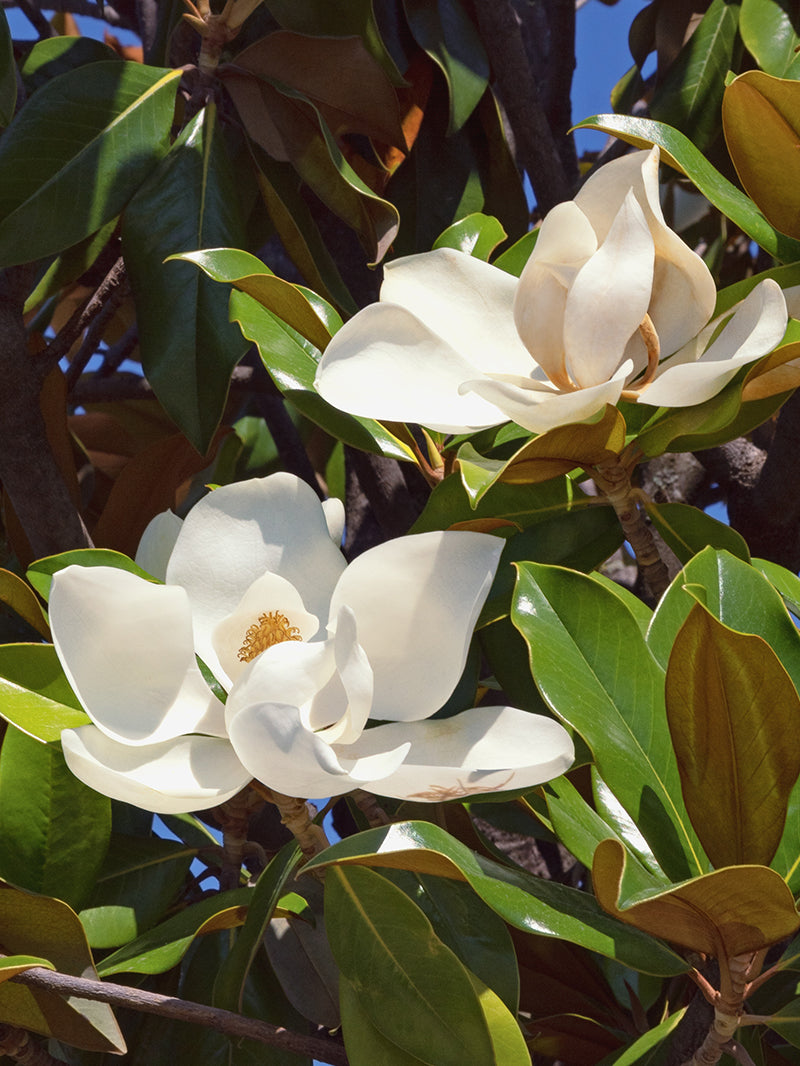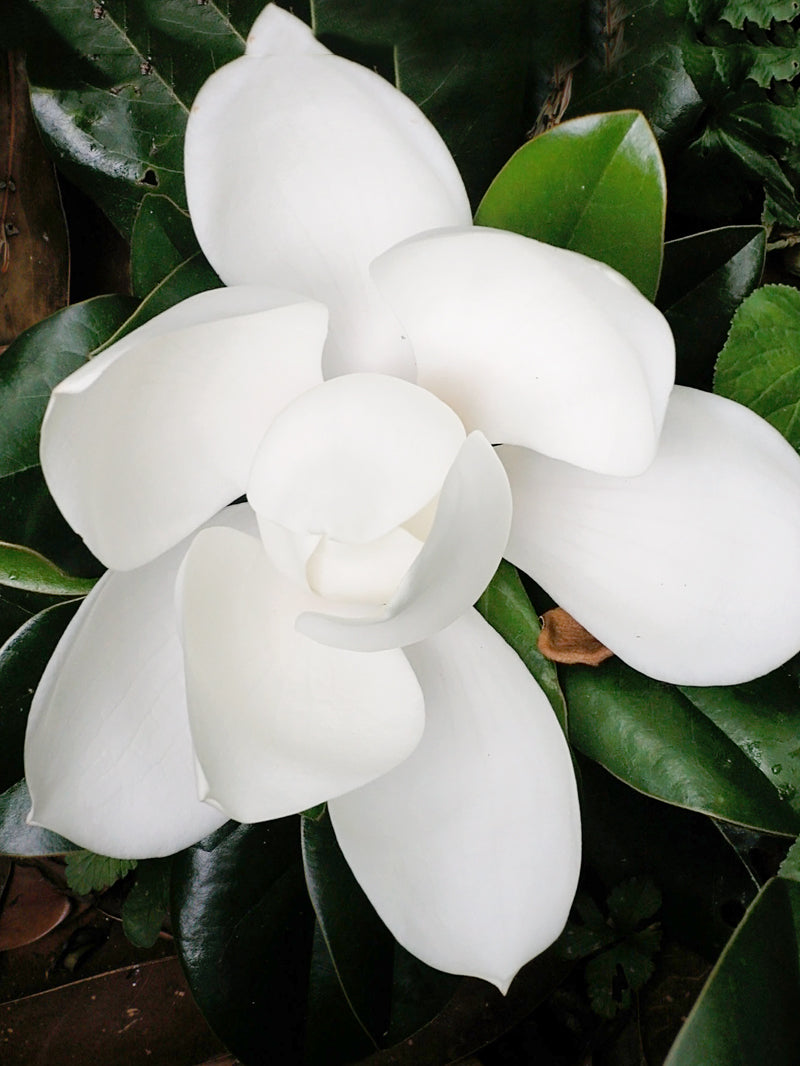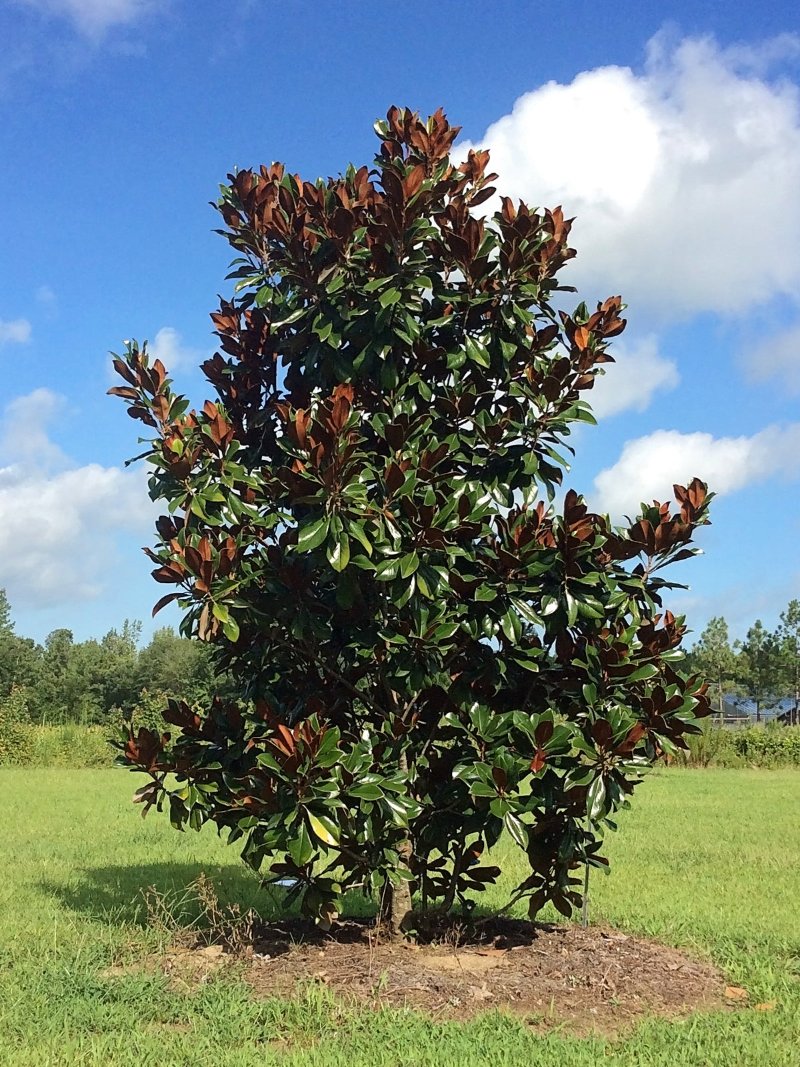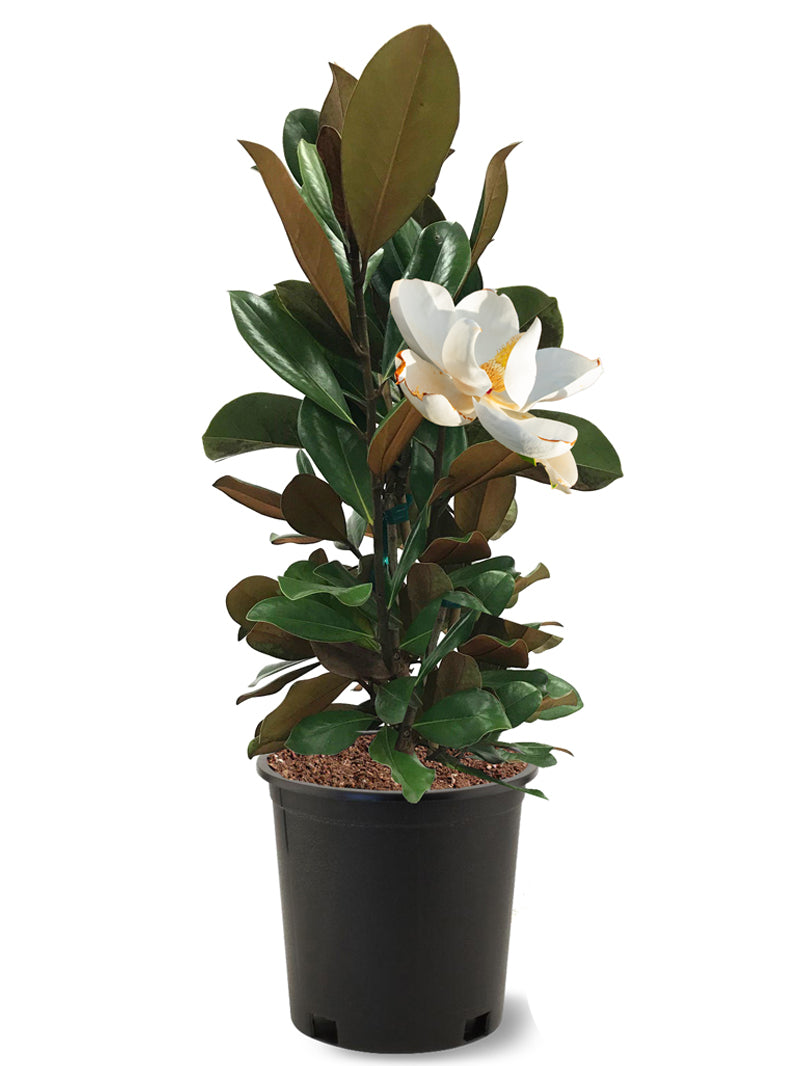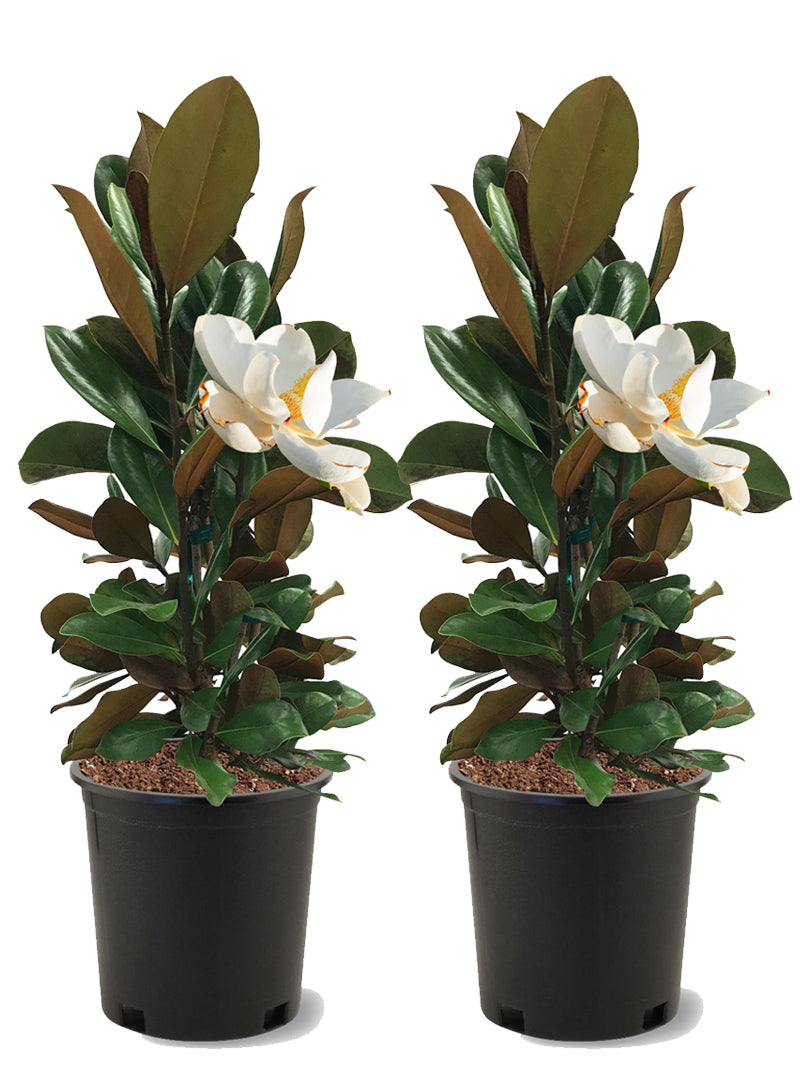
Planning your Southern Magnolia site
Start by selecting a spot that will allow plenty of space for the mature plant. Southern magnolias or magnolia grandiflora prefer full sun to light shade. If you live in a particularly warm or dry climate, your magnolia might benefit from a location shaded from the hot afternoon sun. If possible, avoid exposed, windy locations because strong winds can damage large flowers and the typically brittle branches. Most magnolias grow best in moist, well-drained, slightly acid soils but neutral to slightly alkaline soils are also suitable for growth.
Soil Prep for Your Magnolia
It’s time to start digging! First, you will need to dig a hole three times the width of the size of the pot, and just as deep as the root ball. Set the soil you have dug out aside and mix it with compost. Remove the plant from its pot and gently loosen the root ball. Place the plant in the planting hole and replace the soil with the mix and gently pack down the dirt. To avoid planting too deep make sure the plant is at a position with the top most roots at the soil line. Your magnolia should be watered thoroughly for the roots to settle and to eliminate air pockets.
If moist, peaty soils are available, Southern Magnolia will thrive in full sun and hot conditions once established. If irrigation cannot be provided periodically, plants located in partial shade seem to grow better. Very drought tolerant when grown in areas with plenty of soil for root expansion. Only moderately drought tolerant in restricted-soil areas or in areas with poor, dry soil. Southern Magnolia prefers acid soil but will tolerate a slightly basic, even wet or clay soil. Optimal acidity is 4.5 to 6.5 on the pH scale. Most average garden soils fall between a pH range of 6.0 to 7.0.
A good way to find out the acidity of your soil would be to take a sample to the Cooperative Extension agent near you, for testing. You can also buy an at-home kit at most garden centers. Fertilizer should only be applied at correct times of the year. Never put fertilizer in the planting hole.
To protect your tree, please provide a 4 foot diameter weed and grass-free area. This will provide a water basin and minimize anything from taking water and nutrients from the tree. During spring and summer, 4-6 inches of mulch should be placed a few inches away from the trunk to provide good air circulation. The best type of mulch for your crape myrtle is acid mulch, pine bark, compost or pine needles. Do not mulch with mushroom compost.
Fertilizer for Southern Magnolias
Southern Magnolia are light feeders, however will benefit from fertilization. Feed in spring with a slow-release shrub & tree food, preferably one that contains Sulfur and/or Iron for deep greening of foliage. Alternatively, you can feed with a natural organic plant food. To avoid stimulating new growth that could be damaged by an early frost, cease fertilization two months prior to the average first frost date in your area.
A complete general-purpose garden fertilizer — such as 8-8-8, 10-10-10, 12-4-8 or 16-4-8 — is ideal for Southern Magnolia. Avoid over-fertilization because it causes excess foliage growth and reduced flowering. It’s better to use too little than too much. The best time to fertilize is just before a rain. Otherwise, water in the fertilizer after application with irrigation. It is not necessary to remove mulch when fertilizing.
Be sure to evenly spread fertilizer under the entire canopy of your tree, avoiding a 5 inch area closest to the trunk. After fertilizing, be sure to water your tree. Depending on the age of your plant, application of the fertilizer should be adjusted.
WHEN TO FERTILIZE SOUTHERN MAGNOLIA:
For newly planted small plants (#1 pot/#3 pot size), apply 1 teaspoon of fertilizer monthly from March to August along the perimeter of the planting hole.
For established plants, simply broadcast the granular fertilizer in spring before new growth begins.
Once established, growth can be accelerated with light, frequent applications of fertilizer during the first three growing seasons. Magnolia roots have been shown to grow more than three times further than the canopy width of the tree, so they can obtain nutrients applied to nearby plants and turf grass.
|
8-8-8 or 10-10-10 |
Year 1: ½ cup along the perimeter of the planting hole in March, May, and July Year 2: 2 cups and broadcast it in a circle-shaped area from the tips of the canopy to 3 feet beyond the canopy in March, May and July Year 3: 4 cups and broadcast it in a circle-shaped area from the tips of the canopy to 6 feet beyond the canopy in March, May and July Year 4+: The tree should have a well-established root system and should be able to forage for nutrients on its own |
|
Espoma Citrus Tone (Organic) |
Year 1: 1 ½ cup along the perimeter of the planting hole in March, May, and July Year 2: 4 ½ cup and broadcast it in a circle-shaped area from the tips of the canopy to 3 feet beyond the canopy in March, May and July Year 3: 6-10 cups and broadcast it in a circle-shaped area from the tips of the canopy to 6 feet beyond the canopy in March, May and July Year 4+: The tree should have a well-established root system and should be able to forage for nutrients on its own |
Water For Southern Magnolia
During the first year, the tree is considered newly established, meaning it is very critical for your plant to be watered. On light/sandy soil water 2x a week, but on clay soil 1x a week will do. When watering your tree be sure to soak the root system entirely. Whether you have a sophisticated automatic irrigation system, or are just using a watering can or bucket, it is better to water periodically and allow the soil to dry out a bit between waterings. Trees do not expect to be growing in perpetually wet soil. Over-watering can be just as harmful as lack of watering. Always take rain water into account before deciding to water your tree by hand/irrigation.
When watering with an automated irrigation system it's best to set your timer to water during the early morning hours and not in the late evening or at night, which can lead to the onset of fungus and other foliar diseases. During the first few weeks after planting, check soil moisture often and adjust irrigation time if necessary to keep the soil moist, not wet.
Once the tree is established, it should receive at least one inch of water each week. After the first year you don't need to be quite as vigilant as the tree will have established its root system. When your tree reaches maturity, it will be naturally drought-resistant.
Pruning Your Southern Magnolia
Southern Magnolias do not require pruning except to remove a damaged or broken branch, or a stray branch that is spoiling the form of the tree. That said, they can be pruned to form a more dense tree or for espalier (trained to grow flat against a wall).
WHEN TO PRUNE
The time to prune a Magnolia is after they bloom or during the summer. Pruning them in midsummer will give them time to heal before winter.
HOW TO PRUNE
Prune a Southern Magnolia only when necessary, since they can bleed from pruning wounds. Magnolias can be slow to heal and not make new growth until the second season after pruning, so avoid large cuts into old wood if possible.
When pruning your Southern Magnolia, remove the entire twig or limb down to its base. Don't leave a stub that can produce weak stem suckers and make it easier for pests and diseases to attack the tree. Don't paint or tar pruning cuts because it interferes with the plant's own wound defense system.
The only tool you will need for the task is a sharp pair of bypass hand pruners for branches less than 1 inch in diameter, or a lopper pruner for branches up to 1 and 1/2 inch, or a pruning saw for the largest branches. Make sure blades are sharp to leave smooth cuts that heal faster and reduce disease problems.
Note: If you're pruning to remove a diseased branch, sterilize the pruning tools by dipping them into undiluted alcohol or a solution of 10 percent bleach.
Magnolia Insect & Disease Control
The Neolecanium, or the Magnolia Scale, is the most destructive of magnolia pests. These insects grow within the thick foliage spread of magnolias without displaying any signs of their early development. Once the crawlers emerge, they feed intensively on the young buds and branches. Magnolia scale excretes honeydew after feeding on the tree. This provides an ideal spot for black sooty mold to grow, and it also attracts ants and wasps.
Shop our collection of Southern Magnolias and have them shipped right to your door!

